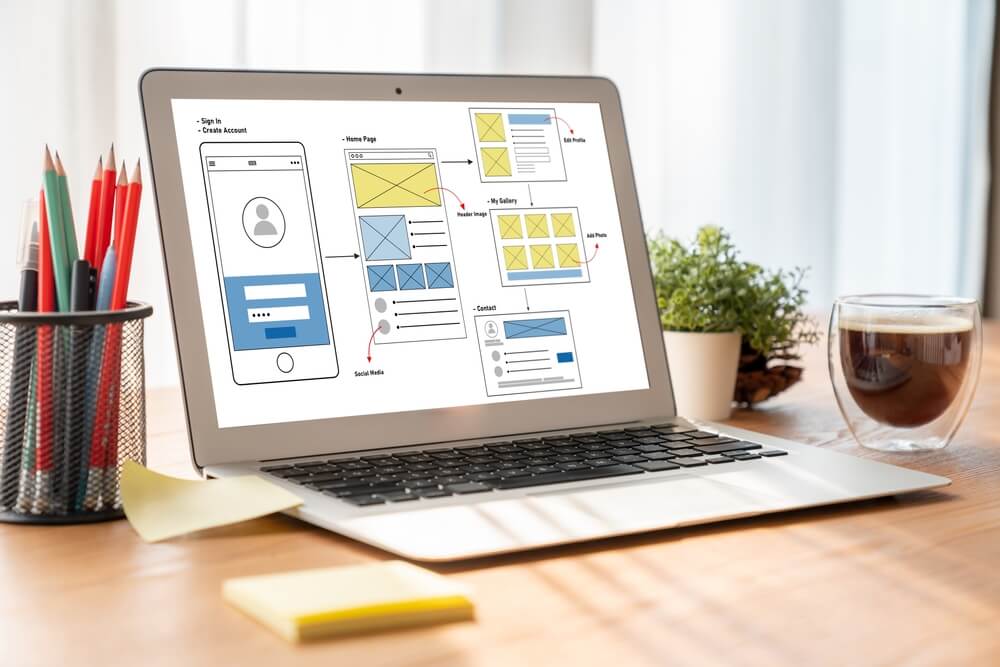
How To Create Accurate User Personas for the Best UX Designs
An accurate picture of the target market is critical to creating user-centered and effective websites. Chicago UX design experts rely on user personas for the best user experience (UX).
User personas are fictional but data-driven representations of the target audience, which helps marketers understand the users’ needs and behaviors. They follow these strategies to create user personas:
- Conduct thorough research.
- Identify patterns and common traits.
- Craft fictional personas.
- Focus on goals and motivations.
- Share and validate with stakeholders.
- Update personas.
Find out how a UX design company creates the best websites. Let’s go!
To learn how Digital Authority Partners can create a standout website for you, watch this video!
Conduct Thorough User Research
To ensure accurate user personas, gather user data through thorough research. Designers conduct interviews, surveys, usability testing, and analytics to gather qualitative and quantitative data to understand user behaviors, pain points, and motivations.
User research is a tedious process that is necessary to create an excellent UX design. These techniques can help:
- Define research objectives, including the specific information that you need for persona creation.
- Use a variety of research methods for a comprehensive range of insights. Each method provides different perspectives on user behavior and preferences to create well-rounded personas.
- Recruit diverse participants with different demographics, behaviors, and needs.
- Ask open-ended questions during user interviews and surveys to allow participants to express their thoughts and experiences in their own words.
- Analyze information gathered to identify common themes, patterns, and trends.
Identify Patterns and Common Traits

While analyzing the gathered user data, look for patterns and common traits among the target audience. Find similarities in their needs, goals, behaviors, buying preferences, and challenges.
Segment users according to their characteristics to effectively create personas that represent distinct segments. Remember that these expert strategies can help you identify traits and patterns in data in Chicago UX design:
- Analyze quantitative data collected through surveys, analytics, or other methods for trends and patterns in demographics, behaviors, preferences, and usage data.
- Conduct a thematic analysis of qualitative data using interviews, focus groups, or open-ended survey questions. This identifies recurring themes, opinions, and sentiments expressed by users.
- Observe user interactions through usability testing or analytics data to help create personas that align with how users interact with your website.
- Identify users with similar needs and goals to design personas that address specific user motivations.
- Use affinity mapping to visually group and organize research findings. To identify overarching themes and patterns, write down insights, observations, and user quotes.
- Cross-reference data from various research sources to validate or reinforce one another.
Craft Fictional Personas
By creating fictional characters representing each user segment, designers can create accurate user personas for promoting UX design. Give a persona a name, a job title, background information, and characteristics.
For instance, “Tech-savvy Tina" refers to a young professional who prefers efficient mobile interactions. It takes the following techniques to effectively craft fictional personas:
- Use data-driven insights collected from user research to inform the characteristics and behaviors of the personas. Personas must be based on actual user data to ensure accuracy and relevance.
- Personalize personas by giving them names, job titles, and relevant backgrounds. Aside from our example earlier, meet "Adventurer Amy," an adventurous traveler who loves hiking, surfing, and kayaking.
- Include critical attributes that define each persona, such as demographics (age, gender, location), goals, motivations, preferred devices, and pain points.
- Add a representative photo to make personas feel more natural. Use a stock image that embodies the persona's characteristics.
- Create a short narrative or story for each persona that describes their typical behaviors, challenges, and experiences.
- Avoid creating too many personas and focus on the most significant and distinct user groups that align with the business objectives.
Share and Validate with Stakeholders

Once your user personas are ready, share them with stakeholders, including designers, developers, and product managers. Everyone should understand the target audience's needs and expectations and agree with the user representation.
Validate and iterate personas through stakeholders’ feedback. Effectively share and validate user personas using these techniques:
- Present user personas using infographics or slides in an engaging and visually appealing format.
- Facilitate a workshop or meeting with relevant stakeholders to present and explain the personas in detail, answer questions, and gather real-time feedback.
- Encourage stakeholders to provide input and feedback. Consider their feedback to refine and improve the personas.
- Show how the personas connect to the overall business objectives and how these inform decision-making.
- Demonstrate how user-centric design can positively influence user satisfaction, engagement, and the success of a website.
- Illustrate how user personas directly influence design choices and product features through implications derived from the personas, such as user journey maps, feature prioritization, or content strategies.
- Create empathy-building experiences. For example, scenarios or role-playing exercises where stakeholders must decide according to the personas' needs and goals.
Keep Personas Updated
Once user personas are in place, use them as a reference point in the website design process. Create design decisions based on how a persona would interact with the website. Consider how sites with good UX design can address pain points.
Remember, user personas are not static. These evolve as the company’s products and audiences change. Regularly gather feedback and data from real users to validate and update personas. Apply these strategies:
- Conduct regular user research through interviews, surveys, and other research methods.
- Perform usability testing to identify and fix UX design challenges.
- Understand the importance of a user-friendly website design for local users. For example, a Chicago business needs to continually update its UX design, considering local trends, changing customer preferences, and local needs.
- Utilize analytics tools to track user actions, patterns, and preferences to identify trends and areas for improvement in the current UX design.
- Consider technological advancements or shifts that have occurred since the latest persona update, such as increasing use of voice assistants, augmented reality, or changes in device preferences.
- Add diversity and inclusivity to create designs that cater to a broader audience and prevent unintentional biases.
- Validate and iterate continuously through user feedback and testing. Iterate on personas as you receive new data and insights from ongoing research.
Summing Up
By following these steps and creating accurate user personas, you can empathize with the target audience and create a Chicago UX design that caters to their actual needs and preferences. This approach leads to more successful UX designs that appeal to and resonate with the target audience.
Learn more about how accurate personas can improve UX in design and enhance your website. Call the experts at Digital Authority Partners (DAP) now.
Want To Meet Our Expert Team?
Book a meeting directly here




